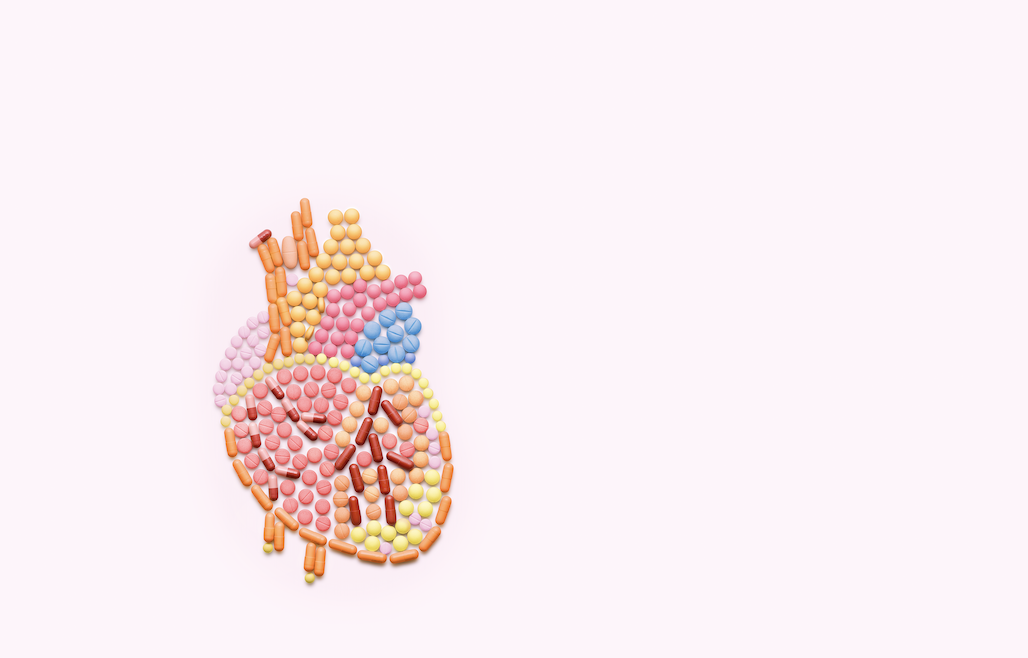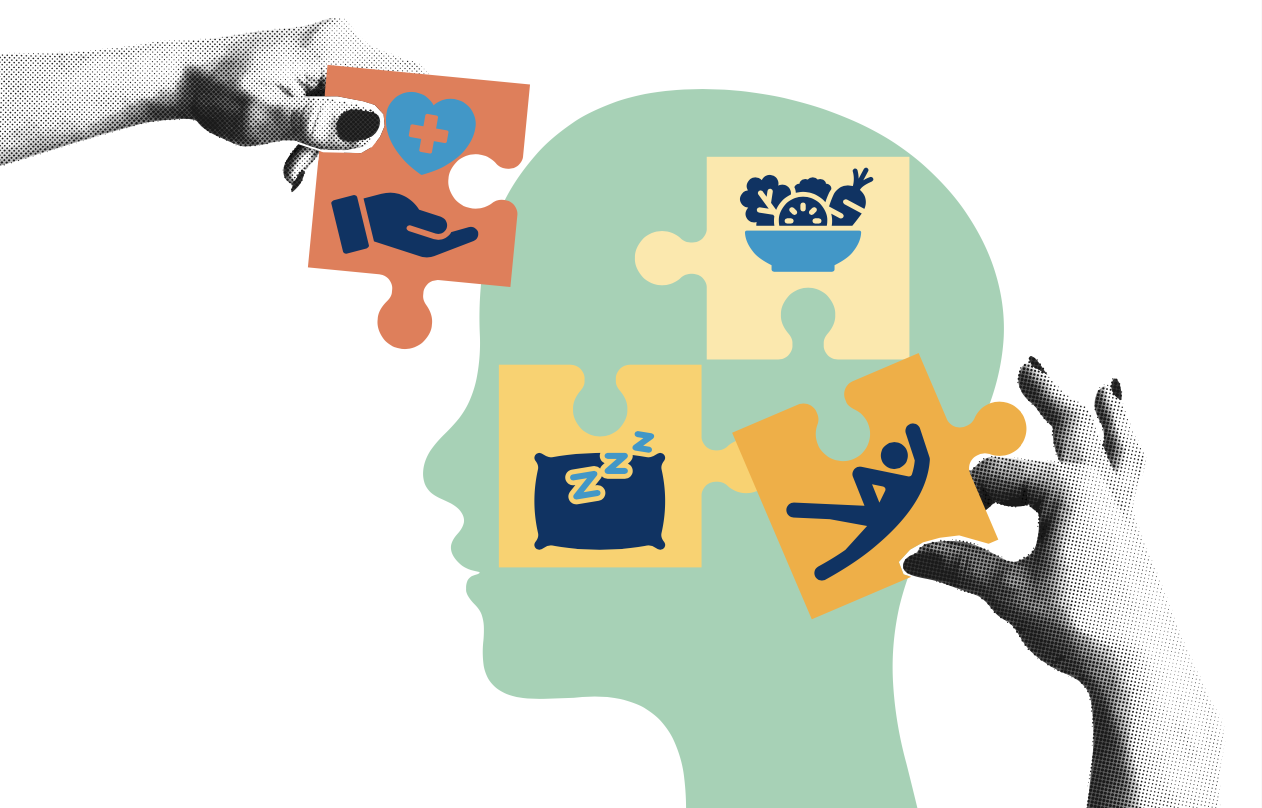A CLINICAL PERSPECTIVE ON THE CAUSES AND REMEDIES FOR FATIGUE
PART 1 – OVERVIEW OF FATIGUE
Fatigue negatively impacts work performance, family life, and relationships.
POSSIBLE CAUSES OF FATIGUE:
Lifestyle related:
- Malnutrition.
- Unhealthy diet.
- Smoking.
- Alcohol consumption.
- Drug abuse.
- Stress.
Physical conditions, such as:
- Anaemia.
- Diabetes.
- Hypertension.
- Obesity.
- Heart disease.
- Chronic fatigue syndrome.
- Fibromyalgia.
Mental health problems, such as depression, anxiety and post-traumatic stress disorder.
Medications Classes of meds that cause fatigue:
- Hypertensives, such as beta blockers.
- Statins and fibrates.
- Proton pump inhibitors.
- Benzodiazepines.
- Antihistamines (even non-drowsy antihistamines can cause drowsiness in 15 per cent of patients).
- Antidepressants.
- Antipsychotics.
- Antibiotics.
Treatment of fatigue should include regular physical activity consisting of stretching and aerobic exercise, such as walking. Caffeine may be useful for temporary alertness. Short naps are proven performance-enhancers. Selective serotonin reuptake inhibitors, such as fluoxetine or sertraline, can improve energy in patients with depression. Patients with chronic fatigue may respond to cognitive behaviour therapy.
MEN VERSUS WOMEN
Men and women differ in the way they describe fatigue:
- Men typically say they feel tired.
- Women say they feel depressed or anxious.
- No cause can be found for approximately 33 per cent of cases of fatigue.
SLEEPINESS VERSUS FATIGUE
Sleepiness is the impairment of the normal arousal mechanism and is characterised by a tendency to fall asleep. People who are sleepy are temporarily aroused by activity, whereas fatigue is intensified by activity, at least in the short-term. Patients with sleepiness feel better after a nap, but patients with fatigue report a lack of energy, mental exhaustion, poor muscle endurance, delayed recovery after physical exertion, and sleep that does not give satisfactory rest.
SECONDARY FATIGUE
Secondary fatigue is caused by an underlying medical condition and may last one month or longer, but it lasts less than six months. Secondary causes of fatigue include lymphadenopathy (tumour spread or recurrence), cardiac murmurs (endocarditis), goitre (thyroid hormone imbalance), oedema (heart failure, liver disease, or malnutrition), poor muscle tone (advancing neurologic condition), and neurologic abnormalities (stroke or brain metastases). Taking bloods to check for the likes of anaemia or low thyroid only finds the case of fatigue in about 5 per cent per cent of patients. Women of childbearing age should receive a pregnancy test to rule out pregnancy as a cause of fatigue. With cancer, renal disease, or other chronic diseases associated with anaemia, patients are likely to be less fatigued if their haemoglobin level is maintained at 10g per dL (100g per L). Non-anaemic, menstruating women who have low normal ferritin levels report increased energy after four weeks of iron supplementation.
PHYSIOLOGIC FATIGUE
This is a feeling of fatigue caused by things such as lack of exercise, boredom, or mental stress that results in lack of energy and depression. It is relieved with rest.
No cause can be found for approximately 33 per cent of cases of fatigue
CHRONIC FATIGUE
Chronic fatigue is defined as fatigue that lasts longer than six months. Medical conditions may cause or contribute to chronic fatigue.
CAUSES OF CHRONIC FATIGUE
- Cardiopulmonary: Congestive heart failure, chronic obstructive pulmonary disease, peripheral vascular disease, atypical angina.
- Disturbed sleep: Sleep apnoea, gastro- oesophageal reflux disease, allergic or vasomotor rhinitis.
- Endocrine: Diabetes mellitus, hypothyroidism, pituitary insufficiency, hypercalcaemia, adrenal insufficiency, chronic kidney disease, hepatic failure.
- Infectious: Endocarditis, tuberculosis, mononucleosis, hepatitis, parasitic disease, human immunodeficiency virus.
- Inflammatory: Rheumatoid arthritis, systemic lupus erythematosus.
- Medication use: Sedative-hypnotics, analgesics, antihypertensives, antidepressants, muscle relaxants, opioids, antibiotics, or substance abuse.
- Psychological: Depression, anxiety.
SELF-HELP TO REDUCE FATIGUE
Daily exercise, maintaining interpersonal relationships, and returning to work are linked with improvement in fatigue of any cause. Regular moderate aerobic activity (ie, 30 minutes of walking or equivalent activity on most days of the week) reduces diseaserelated fatigue more effectively than rest. Patients who have features suggestive of depression could trial a selective serotonin reuptake inhibitor (SSRI).
STRESS
Stress is one of the most common conditions in modern Ireland. Stress is the way you feel when pressure is placed on you. A little bit of pressure is good; it gives you the motivation to perform better. However, too much pressure over a prolonged period can lead to stress that is unhealthy for the mind and body. The good thing is that stress is more recognised by the medical profession nowadays and is easily treated.
COMPLICATIONS
If you are very stressed or experiencing stress over a long period of time, you may develop other conditions as a result. These conditions can include:
- Anxiety.
- Depression.
- Insomnia.
- High blood pressure.
- Stomach and duodenal ulcers.
- Asthma.
- Rheumatoid arthritis.
- Over-active thyroid (hyperthyroidism).
STRESS AND EMOTIONAL EXHAUSTION
When stress begins to build due to negative or challenging and continual life events, people can find themselves in a state of feeling emotionally worn-out and exhausted. This is called emotional exhaustion. For most people, emotional exhaustion tends to slowly build up over time. Emotional exhaustion includes emotional and physical symptoms.? Emotional symptoms include:
- Anxiety.
- Apathy.
- Depression.
- Feeling hopeless.
- Feeling powerless or trapped.
- Irritability.
- Lack of motivation.
- Nervousness.
- Tearfulness.
PHYSICAL SYMPTOMS INCLUDE:
- Fatigue.
- Headaches.
- Lack of appetite.
- Sore muscles or muscle tension.
PART 2 – NATURAL WAYS TO COMBAT FATIGUE AND STRESS: FOOD FOR THOUGHT
Diet is one of the biggest influences on wellbeing and alertness. Everyone has heard the general advice of ‘follow a balanced diet’, so here I give a few small tips.
Oatmeal
Oatmeal is a low-GI food, which means it releases energy slowly. Therefore, porridge is an ideal start to the day, as there is less risk of getting hungry before lunch and it reduces the risk of an energy lull mid-morning or later in the day. ‘GI’ stands for glycaemic index and is a measure of the impact of food on blood sugar. Foods with a high GI will raise the body’s blood sugar levels quickly; by contrast, foods with a low GI will raise them more slowly and over a longer period. High- GI foods such as sugary drinks, white bread or chips give a fast rush of energy, followed by an energy lull. High-GI foods are associated with getting hungry quicker and wanting to eat more. Aim for foods that have a low or moderate GI count, such as oats, pulses and wholemeal varieties of bread and rice.
Coffee
Limiting coffee intake to two cups per day can be beneficial for energy levels. Coffee without sugar is calorie-free. Coffee stimulates the mind and makes us more productive at work. It is important to drink plenty of water when drinking coffee, as coffee is a mild diuretic and can cause dehydration. Drinking more than two cups of coffee per day is counterproductive, as it causes withdrawal symptoms, one of which includes fatigue. The same is true when drinking too much tea.
Bananas
Bananas are fat-free. They are rich in vitamin B6, potassium, vitamin C and fibre. They are an ideal healthy snack for a sugar craving, as they taste great and contain plenty of carbohydrates, the body’s main source of energy. Other fruits such as grapes, apples and watermelon are also fat-free, energising snacks which are full of nutrients.
Water
Staying hydrated is important to ensure all our nutrients are absorbed properly. Water also means we can release heat by sweating. Dehydration causes fatigue. In a climate like Ireland, we should aim to drink about six-toeight glasses of water per day (approx 1.2 litres) to prevent dehydration. More is needed on hotter days and in hotter climates.
It is easy to normalise eating habits which are causing daily damage
Lunch
If experiencing fatigue or a dip in energy after lunch, a change in what is eaten for lunch may help. High-protein lunches appear to produce greater alertness and more focused attention, whereas lunches that are high in fat tend to lead to greater fatigue, sleepiness, and distraction. Chicken, tuna, lean beef and eggs are examples of lunch options that are high in protein and low in fat.
Keep alcohol in moderation
Too much alcohol will reduce energy levels. It robs the body of vital vitamins, especially B vitamins, which play an important part of releasing energy from food. In excess, it causes high blood pressure, and its diuretic action can dehydrate the body, causing tiredness and headache. Moderation is the key. A good tip is drinking a glass of water in between each alcoholic drink; it will not only reduce the risk of a hangover, but it will keep energy levels up.
Taking a look at sugar intake
It is easy to normalise eating habits which are causing daily damage. Too much caffeine, saturated fat and alcohol are no good for the body, and too little exercise is not going to help with long-term mobility, flexibility, and good health. Sugar is something we tend to have too much of and it has an addictive quality; evidence in recent years has proven too much sugar is more dangerous for our health than too much fat. Lowering sugar in our diet can not only be positive to overall health, in the shorter term it can have a big influence on our mood and energy levels. How much sugar am I ‘allowed’? When it comes to New Year resolutions, keep them simple and start with sugar intake. The maximum recommended intake of added sugar is six teaspoons a day (24g). If adding sugar to tea and coffee, this amount will be reached very quickly. If someone takes sugar in the likes of tea or coffee, use brown sugar rather than white sugar as it less refined, so less is absorbed into the bloodstream. Better again, try taking an artificial sweetener, as it does not affect blood sugar levels in the same way as refined sugar and has zero calories.
Being familiar with sugar content of foods
How can someone tell how much sugar a product contains? Look at the food label relating to 100g of the product, and anything under 5g of sugar per 100g is a low-sugar product. To see how much sugar the actual product contains, ie, cereal bar, look at the food label and it will give an amount of carbohydrates in grams, and just below it will state ‘of which is sugars’ in grams also. Each teaspoon of sugar weighs 4g, so if it states 8g per bar, it means that the product contains two teaspoons of sugar. This gives a good mental image of how much sugar in a product. The main part of the diet should contain natural, unprocessed foods with their own enzymes to aid digestion and provide the body with the nutrients it requires. There are a lot of hidden sugars in processed food, so take a look at what is being consumed. There is a lot of food we consume that has obvious high sugar content — a can of Coke contains over eight teaspoons, and an average portion of most cakes contains between seven and 10 teaspoons. Sugar contains empty calories, as it provides the body with zero nutrition. The sugar in fruit is natural and does not affect the blood sugar levels in the same way as refined sugar. It is important that we keep the blood sugar level stable with our food choices. Choose to snack on foods that contain protein and carbohydrates in preference to sugary snacks to keep blood sugar levels stable. If we constantly snack on sugary foods, there will always be a high level of insulin in the blood, which can cause many problems. Exercising naturally brings down blood sugar levels, so exercise regularly.
MORE ‘DOWNS’ THAN ‘UPS’
As mentioned, high-GI foods like sugars are associated with getting hungry quicker and wanting to eat more. Sugary foods and drinks give quick bursts of energy followed by a big crash, thus increasing general fatigue and lethargy. A lot of sugar has a negative effect of mood too.
EXERCISE
Exercise will help shake-off any cobwebs and make us feel more energised. Exercise has been proven to improve mood by stimulating ‘good mood’ hormones in the brain, such as serotonin. Here are some of the more common mistakes people make when planning to exercise more.
MISTAKE 1: UNREALISTIC GOALS
People tend to be very impatient when it comes to exercise and losing weight. Unless the goal is to lose only a pound or two, it may take a while to achieve the ideal healthy weight and goals should reflect this fact. Having a weekly target will help keep focus.
MISTAKE 2: NOT DOING SOMETHING WE ENJOY
Do not feel the need to do exercises that are not enjoyable. Pick something that you find fun, ie, swimming, rollerblading, skipping, cycling. Everyone is different, so pick something that you enjoy, thus increasing the chances of sticking with it. Many people find team sports or group activities such as spin classes, five-aside soccer, or tag rugby more enjoyable and a great way to meet new people. Try music, for example, a mini-MP3 player to listen to while jogging. People who exercise to music report exercising longer and more vigorously than those who do not.
MISTAKE 3: FAILING TO PLAN
As Roy Keane famously said, “fail to prepare, prepare to fail”. If the exercise regimen is not planned, people are less likely to keep it up. Plan set days of the week to exercise and try to stick with these (no matter how tired we feel after work!). The plan should take account of current fitness and a fitness level one would like to achieve. It should consider the amount of free time the person has, and any injuries or ailments to work around. Even if a person has very little time to exercise due to juggling work and family, etc, even 10 minutes twice a day can make a difference.
MISTAKE 4: NO EXERCISE VARIETY
Varying exercise will avoid boredom and will allow a person to lose weight quicker and get fitter quicker. Varying exercise allows more muscles to be used, meaning more overall strength. For example, if a person normally only runs to exercise, why not break it up with a swim, a cycle, or a Pilates class.
MISTAKE 5: DOING IT ALL ALONE
Find an exercise partner. People who exercise with a partner or group are more likely to stick with a regular routine. Involve family members and friends. People are less likely to skip a workout if they know somebody else is counting on them.
MISTAKE 6: TRAINING AT THE SAME INTENSITY
This mistake typically takes one of two forms: Training with too low an intensity all the time, or training with too high an intensity all the time.
MISTAKE 7: USING IMPROPER TECHNIQUE
Do some homework — find out what the right technique is. The NHS website has good advice. Get help from a professional (such as a trainer or coach). Check technique periodically to make sure everything is as it should be. Staff at local gyms can give excellent advice on exercise regimens and techniques.
MISTAKE 8: NOT REWARDING YOURSELF
Set weekly exercise goals and reward yourself at the end of the week when these are achieved. Rewards in this Covid era can be as simple as a new book or magazine, a cinema trip, new clothes, new make-up, or a massage.
MISTAKE 9: NOT RESTING ENOUGH
Rest has a vital role to play in life and in exercise, and getting the mix of activity and rest right is vital in both. Common signs of over-training include:
- Injury.
- Irritation.
- Insomnia.
- Fatigue.
- Disinterest in exercise.
SLEEP
Ensuring you get enough sleep may sound obvious, but many Irish people are not getting sufficient sleep. Many people cannot get enough sleep for medical reasons, with about 40,000 Irish people suffering from chronic insomnia. However, many are not getting enough sleep quite simply due to not going to bed on time. Sleep requirements vary from person-to-person, and it varies from six-tonine hours. However, most people need up to eight hours’ sleep. The amount of sleep needed does reduce with age. ? References available upon request
CONTRIBUTOR INFORMATION
Written and researched by Eamonn Brady (MPSI), owner of Whelehans Pharmacies in Mullingar Tel 04493 34591 (Pearse St) or 04493 10266 (Clonmore). www. whelehans.inet. Eamonn specialises in the supply of medicines and training needs of nursing homes throughout Ireland. Email ebrady@whelehans.ie







